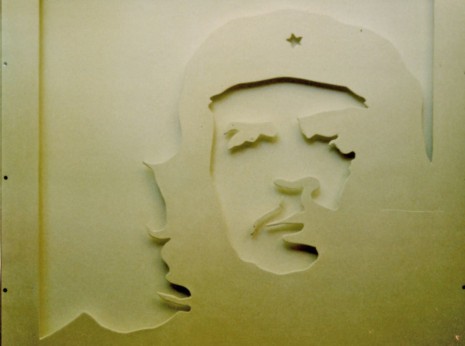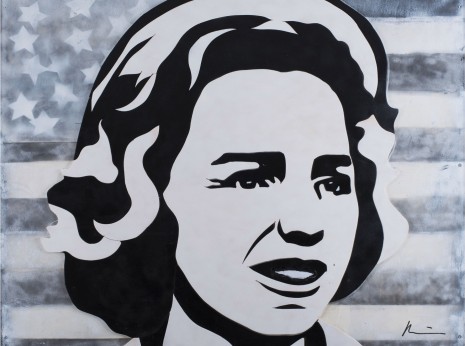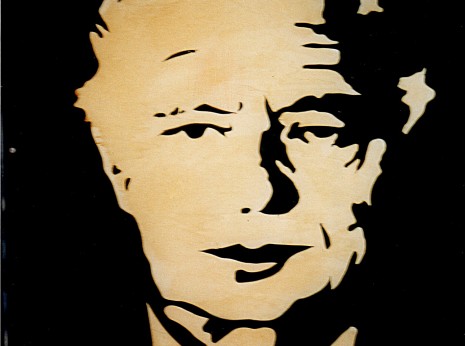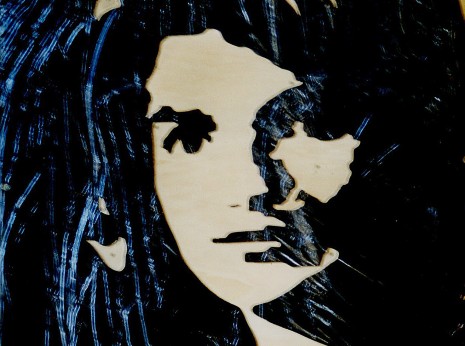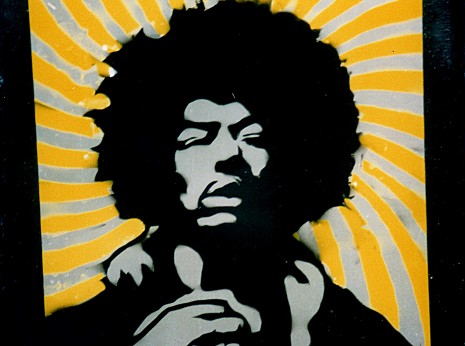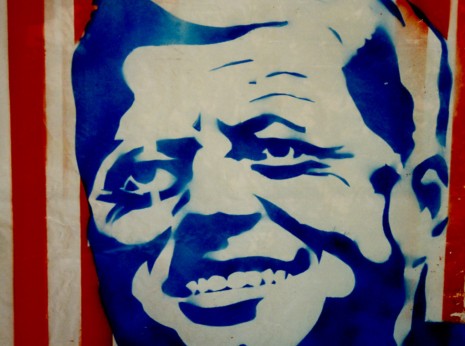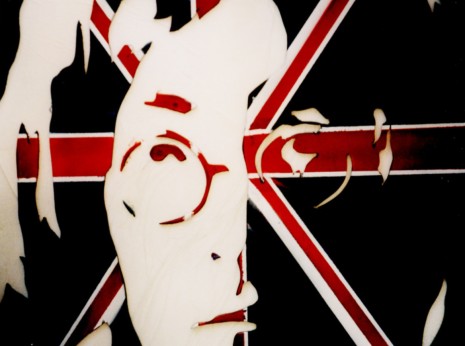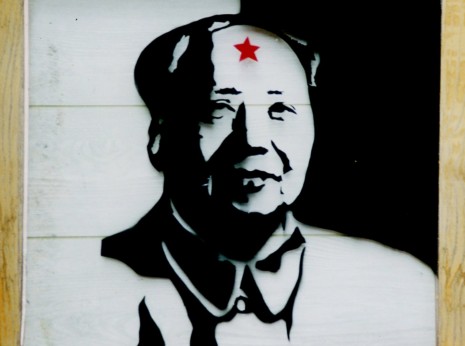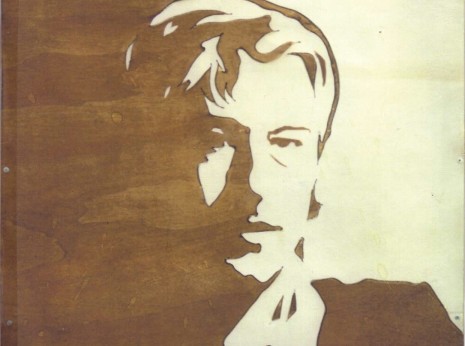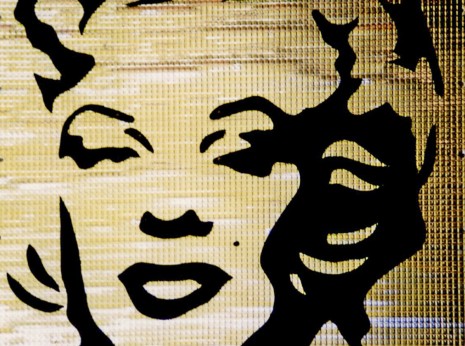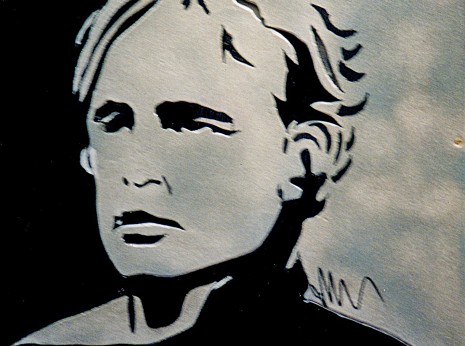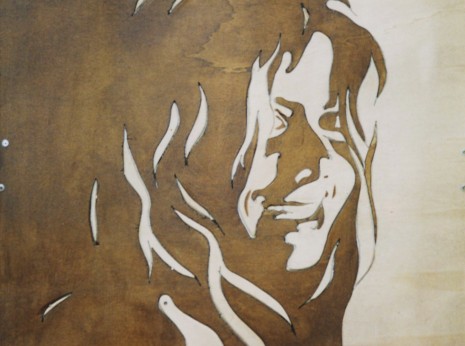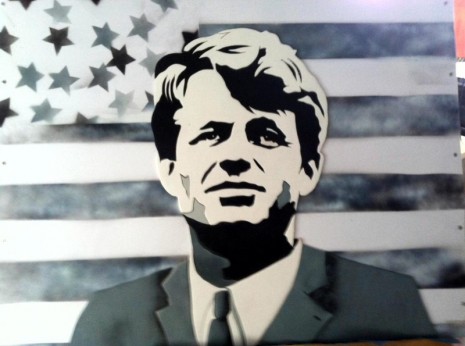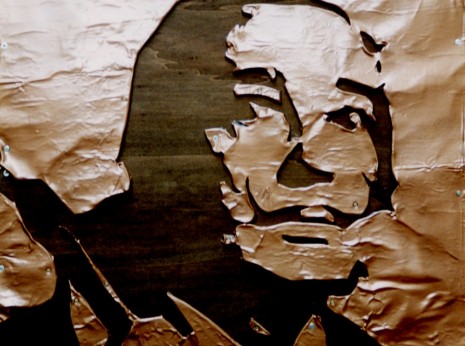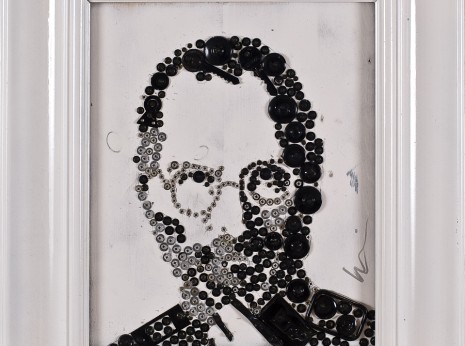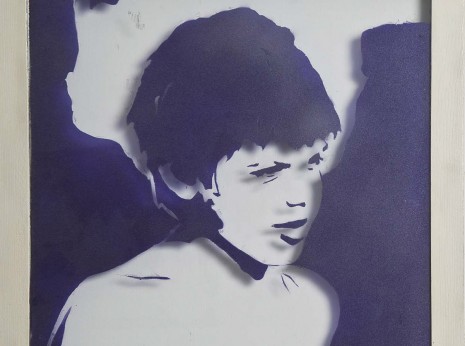Un mondo di ritratti
Marcello Reboani predilige i ritratti. Li ama. La sua carriera è rappresentata da una grande costellazione di ritratti. Che possano essere personaggi famosi, oppure amici, o citazioni dal mondo dell’arte, il ritratto rappresenta il leitmotiv dell’intera ricerca condotta dall’artista romano, fin dai suoi esordi. La ricerca di Marcello Reboani indaga sulla variegata e incontrollabile produzione d’immagini prodotte dalla società contemporanea, da dove l’artista attinge nella costruzione dei suoi percorsi visivi. Ritratti di amici, oppure prelevati dal mondo dell’immagine e dell’informazione che poi sono rielaborati e trasformati in un racconto sulla nostra contemporaneità, attraverso una pittura netta ed essenziale che offre una riflessione sulla natura umana.
Gioca su tanti piani di lettura la composizione espressiva di Marcello. Prende dalla storia dell’arte e ne restituisce nuove interpretazioni, in un gioco di rimandi e citazioni che ne formano, nel tempo, un modulo espressivo dalle diverse sfaccettature. Preleva dai grandi artisti della storia del XX secolo, nella costruzione lessicale di una produzione che vive attraverso un modulo composito, che ne diviene elemento di rappresentazione.
Immagini che si susseguono una dopo l’altra, come in un film su uno spaccato sul mondo. Soggetti sovvertiti e nuovamente narrati nella loro nuova realtà espressiva. Ritratti che offrono una riflessione sull’idea di presenza ed al contempo anonimità, con i suoi significati e valori ad essi connessi. Ritratti dai timbri forti e decisi, che definiscono il tratto linguistico espresso dell’opera di Marcello. Percorsi e direzioni che scandiscono una linea comune e ne formano e ne completano un vocabolario di segni connessi, che vivono omogenei nella produzione dell’artista.
Ci sono tutti i grandi del secolo scorso. Mao, Guevara, i Kennedy, Arafat, Hitler, Stalin e Bin Laden, John Lennon e Gianni Agnelli, Marlon Brando, Vasco Rossi, Gheddafi, Diabolik oppure la Marylin icona di un millennio che volgeva al suo finire. Ma ci sono tantissimi amici ritratti nel mondo di Marcello. Alessandra Martino oppure Olivia Marzotto Caotorta, mentre sorridono, Vittoria Windisch-
Graetz, in posa come in un servizio fotografico, Alfredo Tomaselli, mentre fuma il sigaro, la sua passione, oppure Achille Bonito Oliva con Umberto Scrocca ritratti insieme, mentre discutono animatamente.
Prelevando gli stessi elementi compositivi, tema dominante della ricerca, compone scene dal quotidiano, che possano essere intimistiche, oppure rielaborate dal mondo della propria rappresentazione, che Marcello iconizza attraverso gli elementi di composizione espressiva costruiti dal suo vocabolario visivo. Una carrellata di ritratti che partono da una base in bianco e nero quasi a voler rappresentare come in un giornale quotidiano, che portato nel mondo pittorico, possa essere fissato attraverso la sua composizione. Marcello vuole segnare il suo tempo. Che sia iconico piuttosto che quotidiano, ma che rappresenti pur sempre la storia nel suo complesso. Senza apparenti gerarchie e senza alcun pregiudizio. Che questo possa essere formale, piuttosto che morale, ma che rappresenti, sempre e per sempre, il mondo nel mondo.
A world of portraits
Marcello Reboani has a predilection for portraits. He loves them. His career is represented by a constellation of portraits. They may be famous people, or simply friends, or citations from the art world: the portrait represents the leitmotiv of the roman artists’ entire research right from the beginning. Marcello Reboani’s research investigates the variegated and uncontrollable production of images of contemporary society; this is where the artist dips into to construct his visual paths. Portraits of friends, or taken from the world of images and information, which are then elaborated and transformed in a story of the present day.
He does this with an essential and sharp way of painting that offers a reflection on human nature. Marcello’s expressive composition plays on many levels of interpretation. It takes something from the History of Art and hands back new interpretations, in a game of references and quotations that in time create a multifaceted expressive module. In the lexical construction of a production that lives through a composite module and becomes an element of representation, this way he takes something from the all great artists of the twentieth century. Images that follow one another, just like a film on a cross section of the world.
Overturned subjects are newly narrated with their new expressive reality. Portraits that offer a reflection on the idea of presence and anonymity, with its meanings and the values connected with them. Strong and glaring Portraits that define Marcello’s linguistic brushstroke. Paths and directions that spell out a common line, whilst at the same time they create and they complete a dictionary of connected signs, living homogeneously in the artist’s production.
We find all the great individuals of the last century. Mao, Guevara, the Kennedys, Arafat, Hitler, Stalin and Bin Laden, John Lennon and Gianni Agnelli, Marlon Brando, Vasco Rossi, Gheddafi, Diabolik or Marilyn the icon of a century that was drawing to an end. But there are also many friends portrayed in Marcello’s world. Alessandra Martino or Olivia Marzotto Caotorta, as they smile,
Vittoria Windisch-Graetz, posing as if she were on a fashion shoot, Alfredo Tomaselli, smoking a cigar, his passion, or Achille Bonito Oliva portrayed together with Umberto Scrocca, in an animated discussion. By withdrawing the same compositional elements, which is the dominating theme of his research, he depicts scenes from daily life, may they be intimate, or elaborated in his own world of representations. Marcello makes them iconic through the construction of compositional elements that belong to his visual vocabulary. A tracking shot of portraits that surface from a black and white base, the effect is similar to that of a newspaper, which is fixed through the composition in his pictorial world. Marcello wants to mark the times he lives in. This may be iconic images rather than daily life, but on the whole its always part of the story. Without apparent hierarchies or prejudice. This may be formal, rather than moral, but it will always represent the world within the world.

